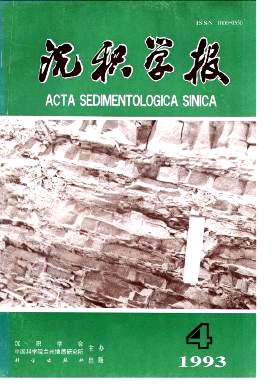A Method of XRD Quantitative Analysis for Argillaceous Sediments
- Publish Date: 1993-12-10
Abstract: As we research argillaceous sediments containing some interstratified clay minerals by the method of XRD quantitative analysis, the first parameter that needs to determinate is the proportion (f) of two component layers. Theoretically, we led to an approximate functional relationship between the proportions (f) and the observed XRD layer spaces (d) of randomly interstratified clay minerals. Therefor we made out a d -f contrasting table for illite/montmorillonite. The intensity parameter K of one mineral is the fundamental parameter for XRD quantitative analysis. Generally, researchers can't separate single clay mineral from argillaceous sediments. In this case, by a special way, we obtained the K values of clay minerals in Jiyang basin. The method of XRD quantitative analysis for argillaceous sediments have applied to hundreds of samples successfully. For the natural oriented section, we can more accurately obtain the relative contents of six minerals, including montmorillonite, I/S interlayer, clastic illite, kaolinite, chlorite and muscovite. For the random powder sample, we can obtain the relative contents of ten minerals, including quartz, feldspar, cal-cite and dolomite except for the six ones listed above. Only one diffraction profile of natural sample is necessary.
| Citation: | Deng Xueneng. A Method of XRD Quantitative Analysis for Argillaceous Sediments[J]. Acta Sedimentologica Sinica, 1993, 11(4): 99-104. |






 DownLoad:
DownLoad: